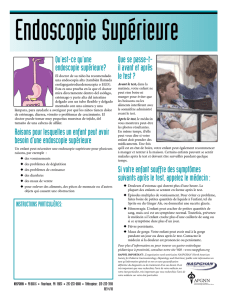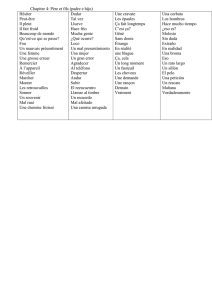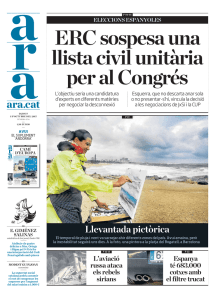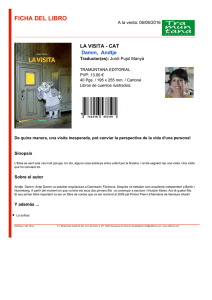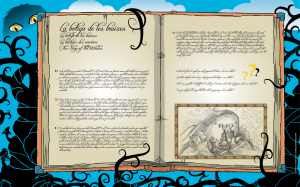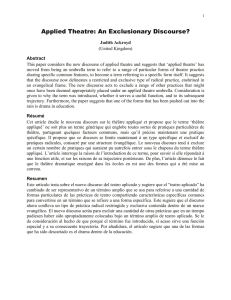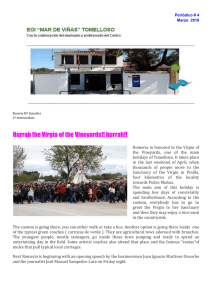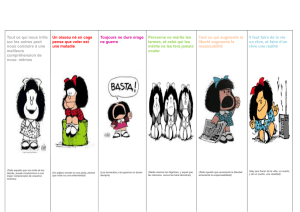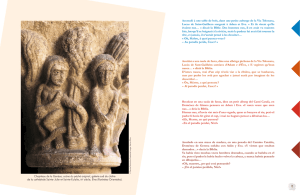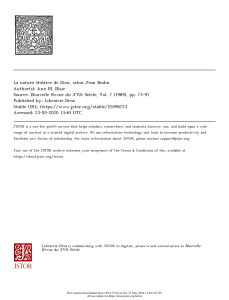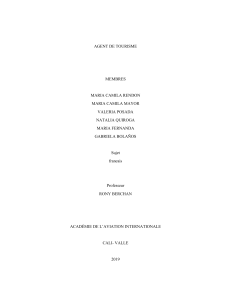Editorial - Griffith University
Anuncio
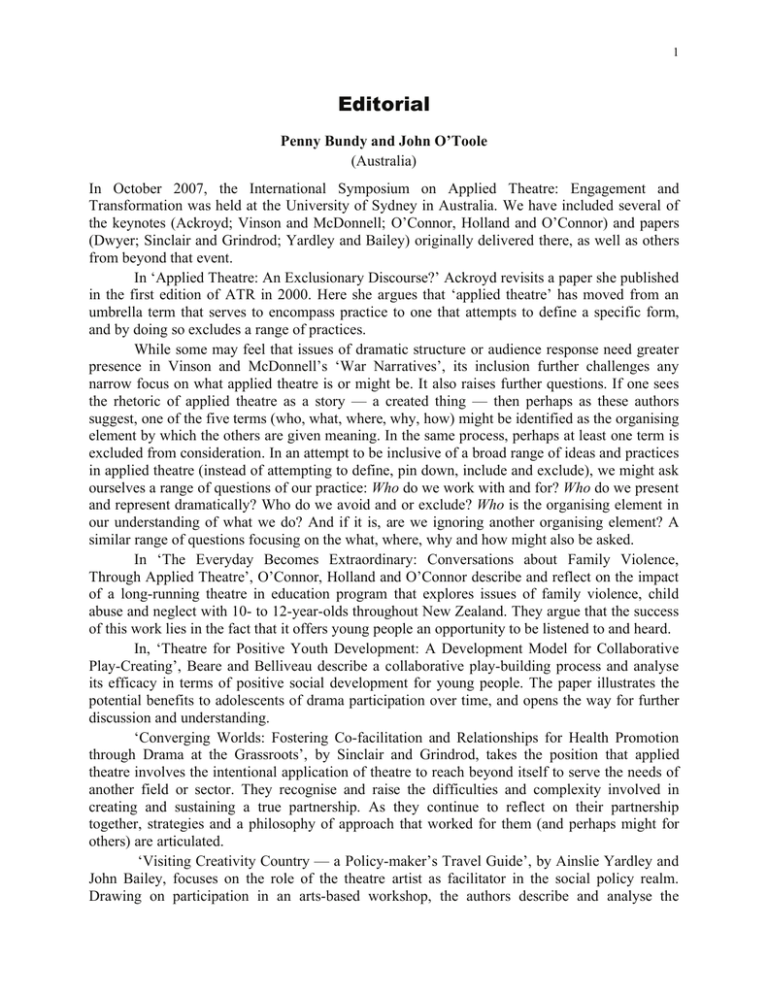
1 Editorial Penny Bundy and John O’Toole (Australia) In October 2007, the International Symposium on Applied Theatre: Engagement and Transformation was held at the University of Sydney in Australia. We have included several of the keynotes (Ackroyd; Vinson and McDonnell; O’Connor, Holland and O’Connor) and papers (Dwyer; Sinclair and Grindrod; Yardley and Bailey) originally delivered there, as well as others from beyond that event. In ‘Applied Theatre: An Exclusionary Discourse?’ Ackroyd revisits a paper she published in the first edition of ATR in 2000. Here she argues that ‘applied theatre’ has moved from an umbrella term that serves to encompass practice to one that attempts to define a specific form, and by doing so excludes a range of practices. While some may feel that issues of dramatic structure or audience response need greater presence in Vinson and McDonnell’s ‘War Narratives’, its inclusion further challenges any narrow focus on what applied theatre is or might be. It also raises further questions. If one sees the rhetoric of applied theatre as a story — a created thing — then perhaps as these authors suggest, one of the five terms (who, what, where, why, how) might be identified as the organising element by which the others are given meaning. In the same process, perhaps at least one term is excluded from consideration. In an attempt to be inclusive of a broad range of ideas and practices in applied theatre (instead of attempting to define, pin down, include and exclude), we might ask ourselves a range of questions of our practice: Who do we work with and for? Who do we present and represent dramatically? Who do we avoid and or exclude? Who is the organising element in our understanding of what we do? And if it is, are we ignoring another organising element? A similar range of questions focusing on the what, where, why and how might also be asked. In ‘The Everyday Becomes Extraordinary: Conversations about Family Violence, Through Applied Theatre’, O’Connor, Holland and O’Connor describe and reflect on the impact of a long-running theatre in education program that explores issues of family violence, child abuse and neglect with 10- to 12-year-olds throughout New Zealand. They argue that the success of this work lies in the fact that it offers young people an opportunity to be listened to and heard. In, ‘Theatre for Positive Youth Development: A Development Model for Collaborative Play-Creating’, Beare and Belliveau describe a collaborative play-building process and analyse its efficacy in terms of positive social development for young people. The paper illustrates the potential benefits to adolescents of drama participation over time, and opens the way for further discussion and understanding. ‘Converging Worlds: Fostering Co-facilitation and Relationships for Health Promotion through Drama at the Grassroots’, by Sinclair and Grindrod, takes the position that applied theatre involves the intentional application of theatre to reach beyond itself to serve the needs of another field or sector. They recognise and raise the difficulties and complexity involved in creating and sustaining a true partnership. As they continue to reflect on their partnership together, strategies and a philosophy of approach that worked for them (and perhaps might for others) are articulated. ‘Visiting Creativity Country — a Policy-maker’s Travel Guide’, by Ainslie Yardley and John Bailey, focuses on the role of the theatre artist as facilitator in the social policy realm. Drawing on participation in an arts-based workshop, the authors describe and analyse the 2 experiences of participants (both public policy-makers/implementers and health consumers), arguing that such participation allowed an exchange of creative ideas of equal merit, not a onesided charitable gift from the able-bodied to the disabled. They argue that embodied creative processes need to be integrated into the professional practice of public policy-makers. In ‘Though This Be Madness …? The Boal Method of Theatre and Therapy’, Dwyer critiques Boal’s Rainbow of Desire techniques, arguing that there is potential contradiction between the psychodynamic theory of personality upon which Boal draws and the broader political aspirations he espouses. He suggests that applied theatre workers might reconceptualise the use of such techniques using a systemic/narrative therapy framework. The papers included in this edition of the journal do not conform to a particular and specific definition of applied theatre. Rather, they represent a range of ideas and practices in a number of different contexts. Interestingly, the authors do place different emphasis on the who, what, where, why and how of the work they discuss. Perhaps, like us, you will see interesting gaps and silences here too. 3 Editorial Par Penny Bundy et John O’Toole (Australie) Le symposium International Symposium on Applied Theatre: Engagement and Transformation a eu lieu à l’université University of Sydney en octobre 2007 à Sydney. Nous avons inclus plusieures communications inaugurales (Ackroyd; Vinson and McDonnell; O’Connor, Holland and O’Connor) et d’autres communications présentées à cette occasion (Dwyer; Sinclair and Grindrod; Yardley and Bailey), ainsi que certaines non directement rattachées à cette conférence. Dans ‘Applied Theatre: An Exclusionary Discourse?’ Ackroyd reprend une communication qu’elle a publiée dans la première édition d’ATR en 2000. Elle y soutient que le terme ‘théâtre appliqué’ n’est plus un terme générique qui englobe les pratiques de théâtre en général, mais qu’il en précise maintenant une forme bien spécifique, excluant ainsi toutes sortes de pratiques. Malgré le fait que certains puissent penser que les problèmes de structure dramatique et de réponse d’audience soient davantage pris en compte dans ‘War Narratives’ de Vinson et McDonnell’s, son inclusion défie encore plus la définition restrictive de ‘théâtre appliqué’. Cela pose également d’autres problèmes. Si l’on considère la rhétorique du théâtre appliqué en tant que narrative — un objet créé — alors, comme ces auteurs le suggèrent, l’un des pronoms relatifs (qui, que, quoi, où, pourquoi, comment) devra être identifié en tant que clé de la structure, donnant ainsi leur signification aux autres pronoms. Au cours de ce procédé, on peut peut-être exclure un pronom. Afin d’inclure une grande variété d’idées et de pratiques au terme ‘théâtre appliqué’ (au lieu d’essayer de définir, d’identifier, d’inclure et d’exclure), nous pourrions nous poser un certain nombre de questions sur nos pratiques: Avec qui et pour qui travaillons-nous ? Qui présentons et représentons-nous dans nos pièces de théâtre? Qui évitons ou excluons-nous? Qui est-il la clé de notre compréhension dans ce que nous faisons ? Si Qui est la clé, oublionsnous les autres éléments clé? Un certain nombre de questions semblables pourrait être posé autour des autres pronoms quoi, où, pourquoi et comment. Dans ‘The Everyday Becomes Extraordinary: Conversations about Family Violence, Through Applied Theatre’, O’Connor, Holland et O’Connor décrivent et réfléchissent sur l’impact des programmes traditionnels d’éducation théâtrale abordant les thèmes de la violence familiale auprès des enfants de 10 à 12 ans en Nouvelle Zélande. Ils prétendent que l’intérêt de ce travail réside dans le fait qu’il permet aux jeunes gens d’être entendus et écoutés. Dans ‘Theatre for Positive Youth Development: A Development Model for Collaborative Play-Creating’, Beare et Belliveau décrivent une méthode collaborative de ‘play-building’ et en analyse son efficacité en termes de développement social positif pour les jeunes gens. Le document illustre les bénéfices possibles pour les adolescents qui participent à des programmes d’arts dramatiques, au bout d’un certain temps, et il ouvre la voie à la discussion et à une meilleure compréhension. ‘Converging Worlds: Fostering Co-facilitation and Relationships for Health Promotion through Drama at the Grassroots’, de Sinclair et Grindrod, argumente que la notion de théâtre appliqué implique l’intention d’utiliser le théâtre comme un moyen de réaliser d’autres buts au bénéfice de secteurs ou de disciplines distinctes. Ils soulignent et décrivent les difficultés qui se posent pour créer et conserver une véritable relation de travail. Alors qu’ils réfléchissent à leur 4 propre relation de travail, ils articulent les stratégies, et une philosophie d’approche qui a marché pour eux (et qui pourrait marcher pour d’autres). ‘Visiting Creativity Country — a Policy-maker’s Travel Guide’, d’Ainslie Yardley et John Bailey, se concentre sur le rôle de l’acteur de théâtre en tant que facilitateur dans le domaine de la politique sociale. A partir de leur expérience de participation à un atelier créatif, les auteurs décrivent et analysent les expériences des participants (acteurs sociaux de développement du secteur public et consommateurs de produits de santé). Ils soutiennent que ce genre de participation a permis un échange d’idées créatives de part et d’autre, et non pas simplement un exercice charitable unidirectionnel de la part d’un groupe capable au profit d’un autre qui l’est moins. Ils soutiennent que les méthodes de travail créatif incorporé ont besoin d’être intégrées dans les pratiques professionnelles des décideurs en matière de politique sociale. Dans ‘Though This Be Madness …? The Boal Method of Theatre and Therapy’, Dwyer critique les techniques Rainbow of Desire de Boal, expliquant qu’il existerait une contradiction entre la théorie psycho dynamique de la personnalité sur laquelle Boal se fonde et les aspirations politiques générales qui le motivent. Il propose que les personnes qui travaillent dans le théâtre appliqué re-conceptualisent éventuellement l’utilisation de telles techniques utilisant le modèle de thérapie narrative/systémique. Les communications publiées dans cette édition du journal ne sont pas conformes à une définition particulière ou spécifique du théâtre appliqué. Elles représentent plutôt un certain nombre d’idées et de pratiques applicables dans un certain nombre de contextes. Il est intéressant de voir que les auteurs placent eux-mêmes plus ou moins l’accent sur le qui, que, quoi, où, pourquoi et comment sur le travail qu’ils discutent. Tout comme nous, vous pourrez peut-être également y observer des manques et des silences significatifs. 5 Editorial Penny Bundy y John O’Toole (Australia) En octubre de 2007, El Simposio Internacional Sobre el Teatro Aplicado: Compromiso y Transformación, se llevó acabo en la Universidad de Sydney en Australia. Hemos incluido varios apuntes principales (de Ackroyd; Vinson y McDonnell; O’Connor, Holland y O’Connor) y artículos de (Dwyer; Sinclair y de Grindrod; Yardley y Bailey; los cuales fueron presentadas originalmente en ese lugar, así como otros generados después de ese evento. En el “Teatro Aplicado: ¿Un Tratado Excluyente?”, Ackroyd vuelve a comentar sobre un artículo que publicó en la primera edición de ATR en el 2000. En este, ella sostiene que el “teatro aplicado” se ha movido de un término abarcativo que se utiliza para señalar la práctica de aquél que intenta definir una forma específica y que al hacerlo así excluye una gama de prácticas. Mientras que algunos consideran que asuntos que poseen una composición dramática o que requieren de una mayor reacción de parte del público, en la “Narrativa de las Guerras” de Vinson y McDonnell, su inclusión, desafía además cualquier enfoque estrecho en cuanto a lo que es o podría ser el teatro. También hace que surjan más preguntas. Si uno ve la retórica del teatro aplicado como una historia — una cosa creada — entonces talvez como lo sugieren estos autores, uno de los cinco términos (quién, qué, dónde, porqué, cómo) pueden ser identificados como los elementos organizacionales por medio de los cuales se les da significado a los otros. En el mismo proceso, talvez por lo menos un término se excluye de ser considerado. Intentando incluir una amplia gama de ideas y prácticas dentro del teatro aplicado (en vez de intentar definir, aclarar, incluir y de excluir) podríamos hacernos una cantidad de preguntas sobre nuestra práctica: ¿Con quién y para quién trabajamos? ¿A quién presentamos y representamos en forma dramática? ¿A quién evitamos y/o excluimos? ¿Quién es el elemento organizador en cuanto a nuestro entendimiento de lo que hacemos? ¿Y si acaso lo es, estamos ignorando otro elemento organizador? Una cantidad similar de preguntas que se enfocan en el qué, dónde, porqué, y cómo podrían también formularse. En “Lo de Cada Día se Vuelve Extraordinario: Conversaciones sobre Violencia Familiar Mediante el Teatro Aplicado”, O’Connor, Holland y O’Connor describen y reflexionan sobre el impacto de un teatro que se presenta a largo plazo dentro del programa de educación que explora los asuntos sobre la violencia familiar, el maltrato y descuido del niño de 10 a 12 años de edad en toda Nueva Zelanda. Ellos argumentan que el éxito de este trabajo radica en el hecho de que les ofrece a los jóvenes una oportunidad de ser escuchados y oídos. En el “Teatro para el Desarrollo Positivo del Joven ‘: Un Modelo de Desarrollo para la Creación del Juego Colaborador’, Beare y Belliveau describen el proceso constructivo del juego colaborador y analizan su eficacia en cuanto al desarrollo positivo social de las personas jóvenes. El tratado ilustra el beneficio potencial para el adolescente en cuanto a la participación en el drama con el correr del tiempo y abre el camino para posteriores discusiones y comprensión. En “Mundos Convergentes: Fomentando la Facilitación Compartida y las Relaciones para la Promoción de la Salud mediante el Drama a Nivel Preliminar, por Sinclair y Grindrod, toman la postura de que el teatro aplicado implica la aplicación intencional del teatro de alcanzar más allá de sí mismo el servir las necesidades de otro campo o sector. Ellos reconocen y señalan las dificultades y complejidades involucradas en la creación y el de sustentar una alianza verdadera. 6 A medida que continúan reflexionando sobre su alianza conjunta, elaboran estrategias y una filosofía de trato que funciona para ellos (y talvez pueda funcionar para otros). “Visitando el País de la Creatividad” — Una Guía de Viaje de un Elaborador de Políticas”, por Ainslie Yardley y John Bailey, se concentra en el rol del artista de teatro como facilitador dentro del dominio de la política. Basándose sobre la participación dentro de un taller basado en el arte, los autores describen y analizan las experiencias de los participantes (tanto elaboradores/implementadores de políticas públicas como de los consumidores de la salud), argumentando que dicha participación permitió un intercambio de ideas creativas de igual mérito y no un regalo caritativo de una sola cara procedente del que posee un cuerpo hábil hacia el que se encuentra discapacitado. Ellos argumentan que los procesos creativos plasmados necesitan ser integrados dentro de una práctica profesional de elaboradores de políticas públicas. En “¿Aunque esto es una Locura …? El Método Boal del Teatro y la Terapia”, Dwyer critica las técnicas del Arco Iris de Deseos de Boal, argumentando que existe una contradicción potencial entre la teoría psicodinámica de la personalidad sobre la cual Boal razona y las amplias aspiraciones políticas que el propugna. El sugiere que los trabajadores del teatro aplicado podrían volver a emitir el concepto en cuanto al uso de dichas técnicas, usando un marco de trabajo dentro de una terapia narrativa/sistémica. Las publicaciones incluidas en la edición de esta publicación no se conforman a una definición particular y específica del teatro aplicado. Más bien, estas representan una cantidad de ideas y prácticas dentro de una cantidad de contextos diferentes. Es interesante el hecho de que los autores si establecen diferente énfasis en el quién, qué, dónde, porqué y cómo del trabajo sobre el cual ellos discuten. Talvez, al igual que nosotros, ustedes podrán ver interesantes brechas y silencios aquí también.
